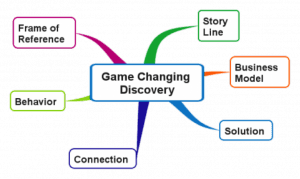Guest Post by Stephan Liozu and Katie Richardson
Willingness-to-pay is a critical element of value management and value-based pricing. Whether you are conducting pricing research or trying to model your value proposition, you need to be able to understand and measure your customers’ willingness-to-pay for your products and services before you actually set the final price for them. The discussion typically happens during the price setting process or towards the end of the innovation process. Willingness-to-pay is indeed an important dimension to consider at that stage of innovation but should also be strongly integrated in the design of front-end innovation activities. We conjecture that the processes and methodologies used in the front-end ideation process of innovation can greatly increase the generation of game changing outcomes which in turn might lead to greater levels of customer willingness-to-pay. Generating breakthroughs and game changing discoveries is probably one of the most difficult steps of the innovation process. Here are some examples of the types of game changing discoveries that may influence customers’ willingness to pay.

Most of the examples displayed in this mind map are pretty common in the innovation discovery process. Innovators will tend to focus on discovering new product or service ideas, new systems or solutions, create story lines or try to modify engrained frames of reference. One of the types of game changing discoveries relates to identifying and creating new user behaviors that will change relationships with time, space, objects, ideas, people, self or energy.
An obvious example of behavior change is the explosion of the smart phone technology versus regular cell phone and the domination of the iPhone®. Another well known example is the discover process of the 3M Post-it® Notes opportunity. Both examples generated new communication, interaction and collaboration behaviors that triggered a superior level of user excitement and quick adoption. Both cases had a disruptive discovery that changed the user behavior and the emotional connection between users. Thus from the emergence of these new behaviors, innovative firms create a higher degree of willingness-to-pay and are able to capture more underlying value in the “eco-system” or platform they created for their overall offering (hardware, software, accessories, apps for example).
Clearly innovation, value and pricing are part of an interconnected and interdependent dynamic system and needs to be managed holistically. The front end of the innovation process is critical to generate differentiated and game changing offerings. Then, the value proposition of these offerings has to be modeled and quantified before finally engaging in price setting consideration. The LeveragePoint Innovation platform is a great tool to help companies model and quantify exciting new value propositions. This dynamic system can be a powerful force of value for your company. So be bold, read more about the proper methodologies and give it a try. Join the value-based revolution!
Stephan Liozu (www.stephanliozu.com) is the Founder of Value Innoruption Advisors and specializes in disruptive approaches in innovation and value management. He is also a PhD candidate in Management at Case Western Reserve University and can be reached at sliozu@case.edu.
Katie Richardson is a Game Changing Coach at Ennova Inc (www.ennovainc.com) and specializes in game changing behaviors using The Shared Clarity System™. She can be reached at krichardson@ennovainc.com.

